Kenichi Yokono, Engraving the Everyday
These red engravings tell a story of oppositions, contrasts, and confrontations between eras, cultures, and sensibilities.
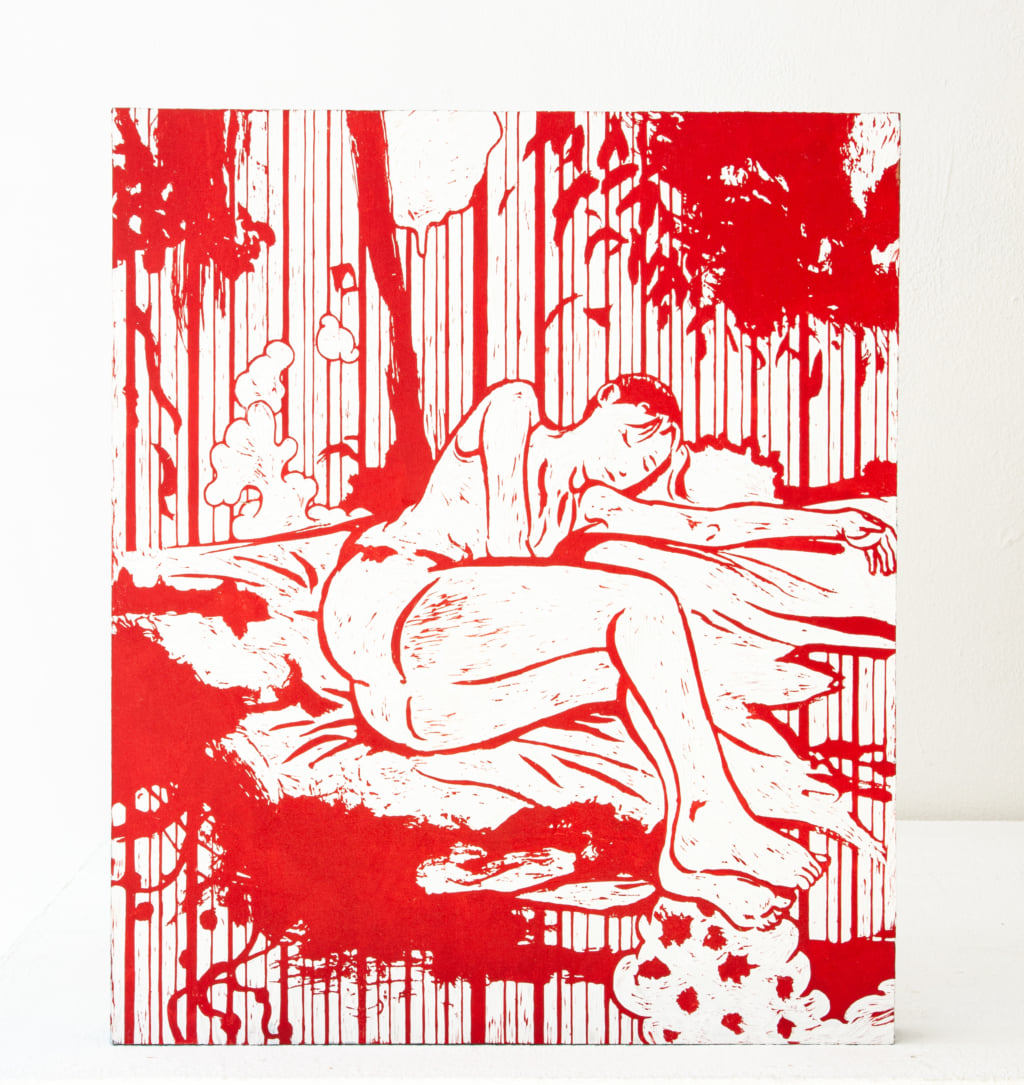
Kenichi Yokono, “Sleeping”, 2019
Initially inspired by motifs from modern Japanese manga culture, anime, or horror films, Kenichi Yokono decided to work using a traditional technique, wood engraving, but without executing the final printing phase. His body of work now focuses more on everyday, neutral scenes.
The Kanazawa-based artist’s compositions reveal a mix of symbols and codes that the viewer needs to take the time to decipher. Cultural stereotypes are connected to these symbols and codes in an unusual way, and the sugary pop imagery specific to Japanese society is drowned in a red universe, which was long tinged with symbols of blood, violence, and cruelty, before gradually tending towards representations that could be described as expressionist. The artist, born in 1972, explains to Pen: ‘I want to be cheerful.’ He achieves this in a counterintuitive manner: ‘I try to be positive while dealing with motifs that sometimes remind me of death. This is because I believe that having a dark essence makes everyday life more positive.’
Metaphorical
The use of red is also a key marker of the artist’s work. This choice leads the viewer to wonder about the dark side of his pieces, which, at first glance, might appear innocent and candid. ‘Red is my favourite colour. […] And red is beautiful and powerful. I feel that it is the colour of blood and represents life force’, Kenichi Yokono continues.
Having long produced work characterised by a combination of kawaii culture and an American punk rock sensibility, seeking to highlight the contradictions inherent in the Japanese cultural environment, Kenichi Yokono changed course in a new cycle of pieces, produced as part of a collaboration with Micheko Galerie (Munich, Singapore). He decided to depict markers of the everyday, the most banal symbols of urban life, with a calmer approach, presenting indoor scenes and pastimes.
‘There are two types of stories: those that are imagined from reality and those that are fantastical, such as other worlds, but for me, everyday life is definitely the starting point. I think it is because I imagine things from my immediate surroundings that I am able give the viewer more freedom to interpret. If we are talking about allegory, then I think all paintings are metaphors. Pop art and horror movies are a part of my daily life, and I think they are very useful.’
With regard to the evolution of his work, his gallery manager Michele Vitucci explains, ‘the new works are more three-dimensional. This is achieved by adding a frame to his woodcut panels. One particular work is an outdoor tea ceremony set, where Yokono has ventured into ceramic making by creating the tea bowls.’
The artist’s work can be viewed on the Micheko Galerie website.

Kenichi Yokono, 'Waiting for the New World', 2013
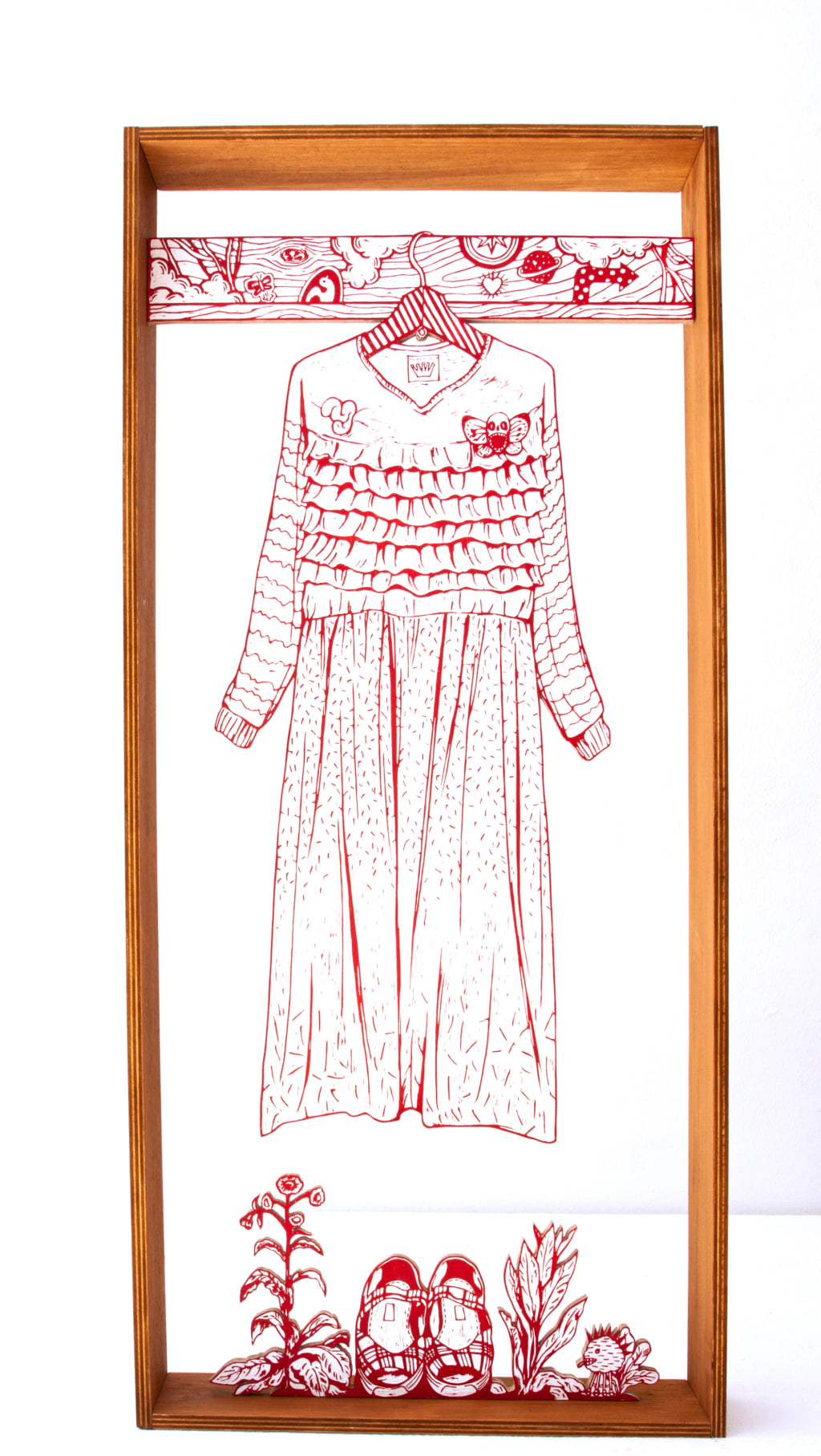
Kenichi Yokono, 'One-piece dress', 2019
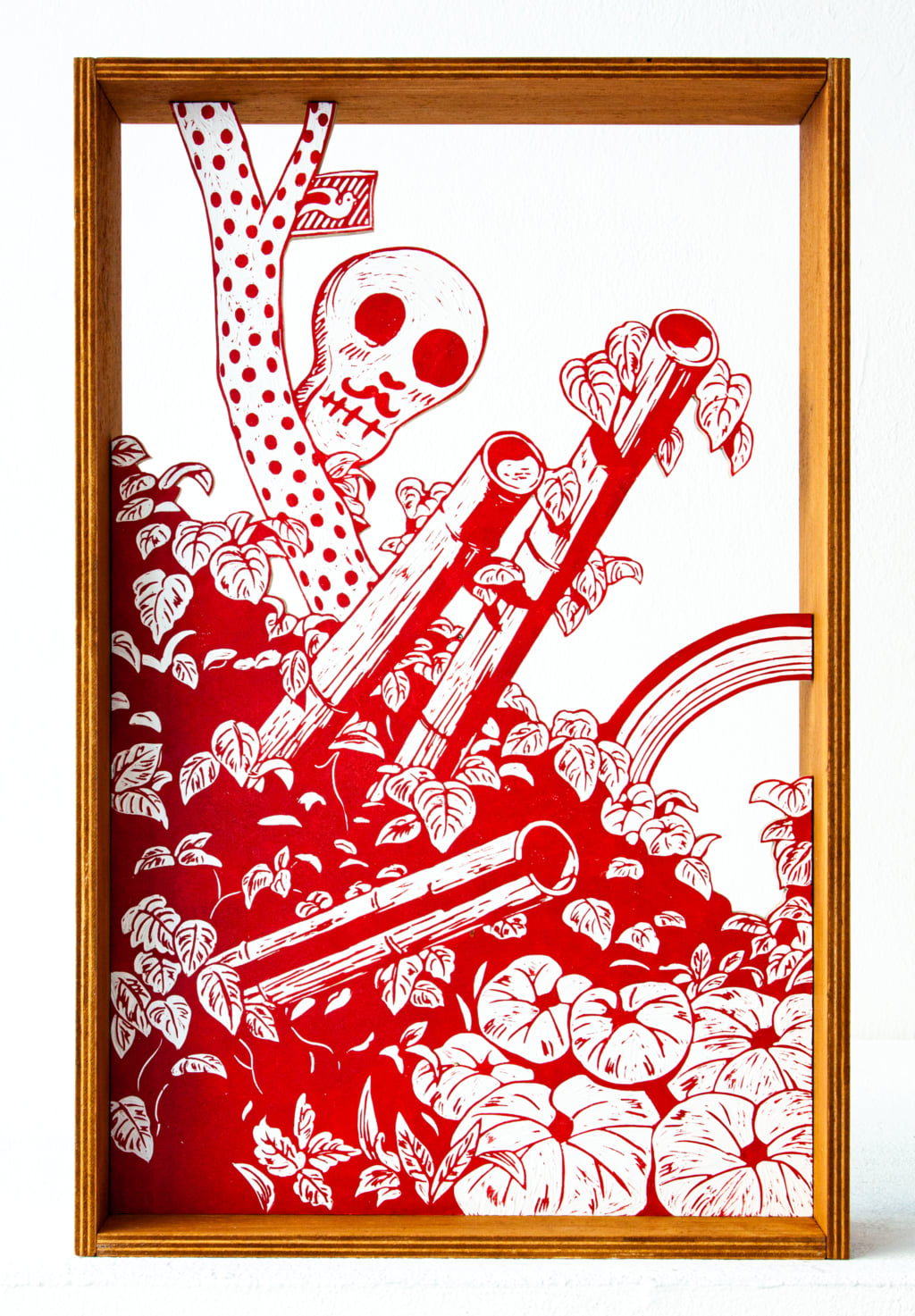
Kenichi Yokono, 'Bamboos', 2019
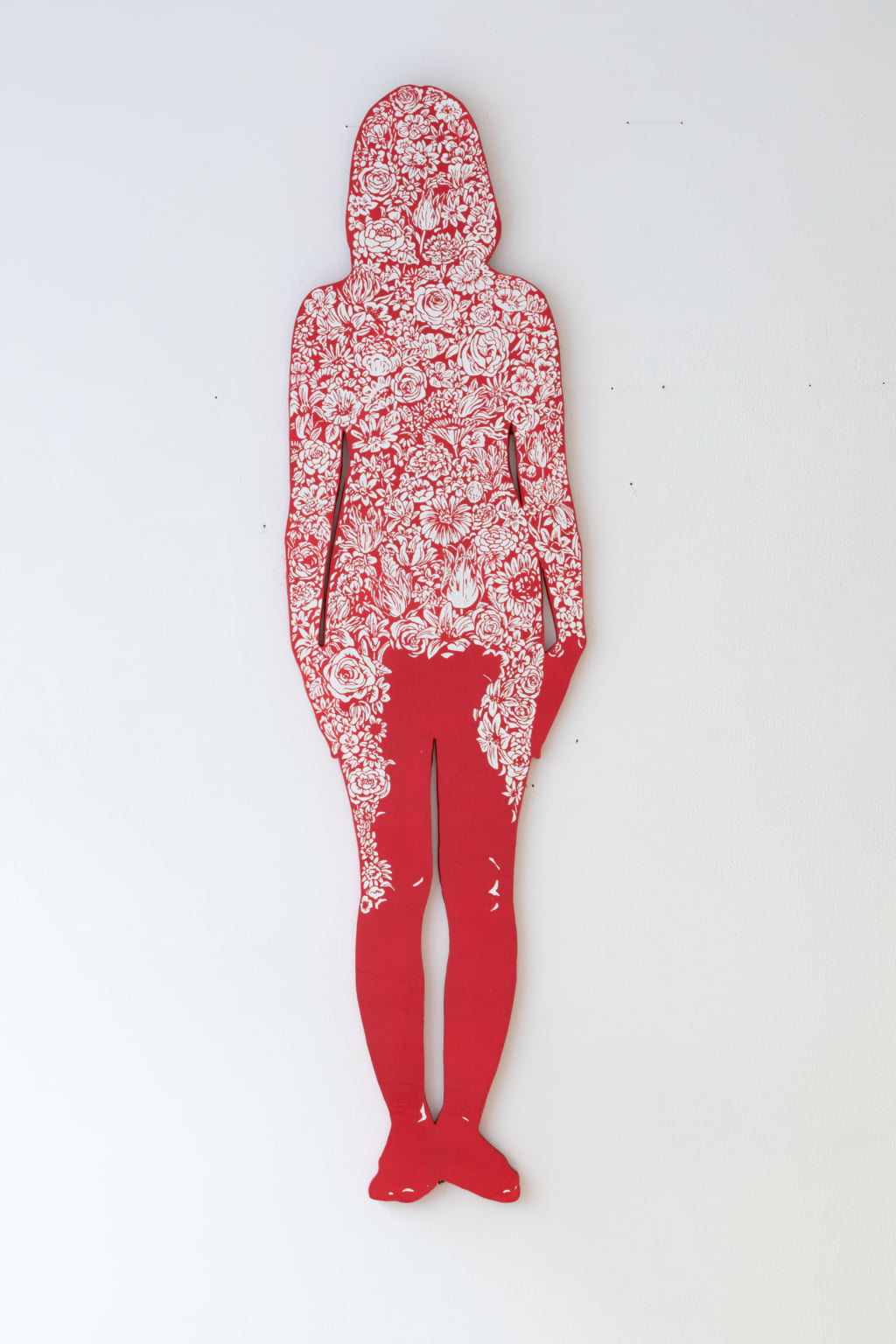
Kenichi Yokono, 'Silhouette of Flowers'
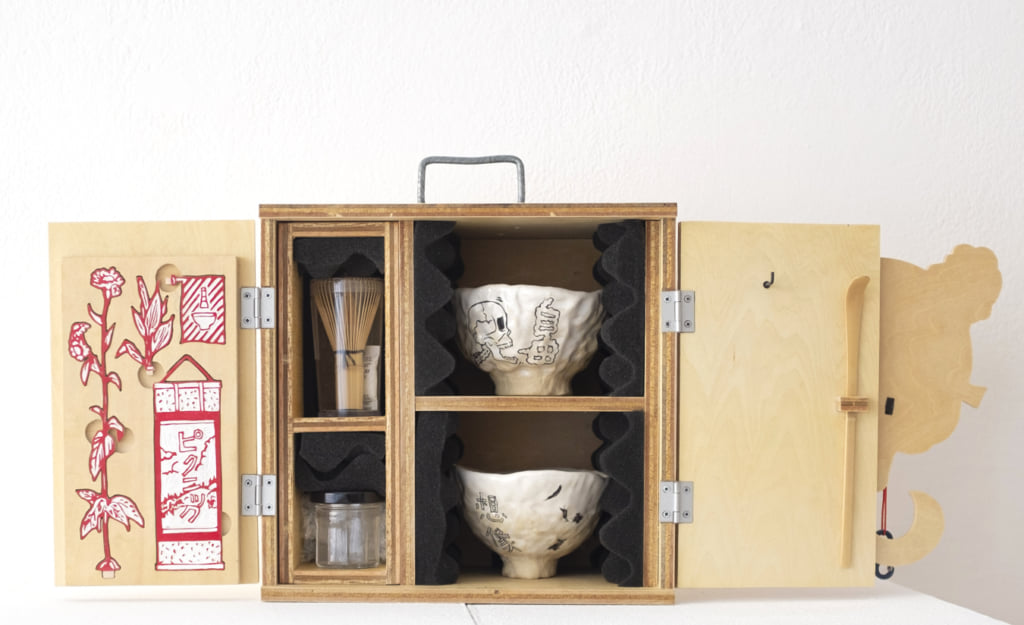
Kenichi Yokono, 'Tea for two'
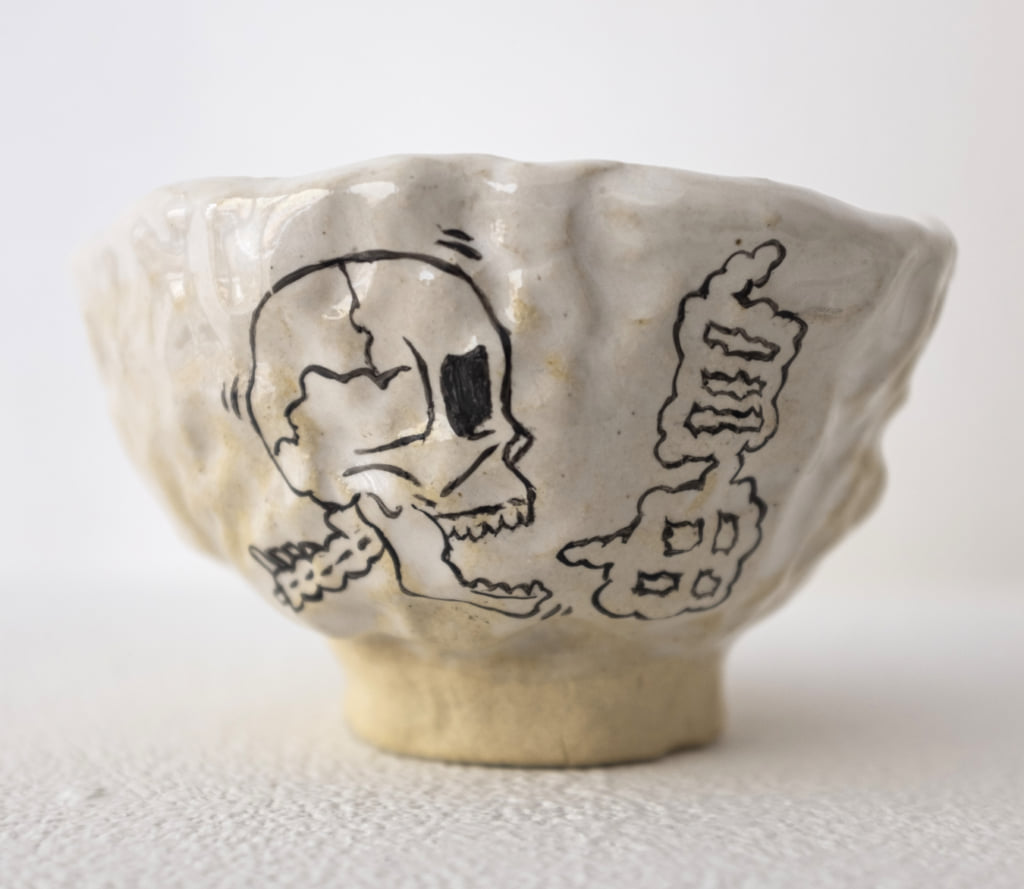
Kenichi Yokono, 'Tea for two'
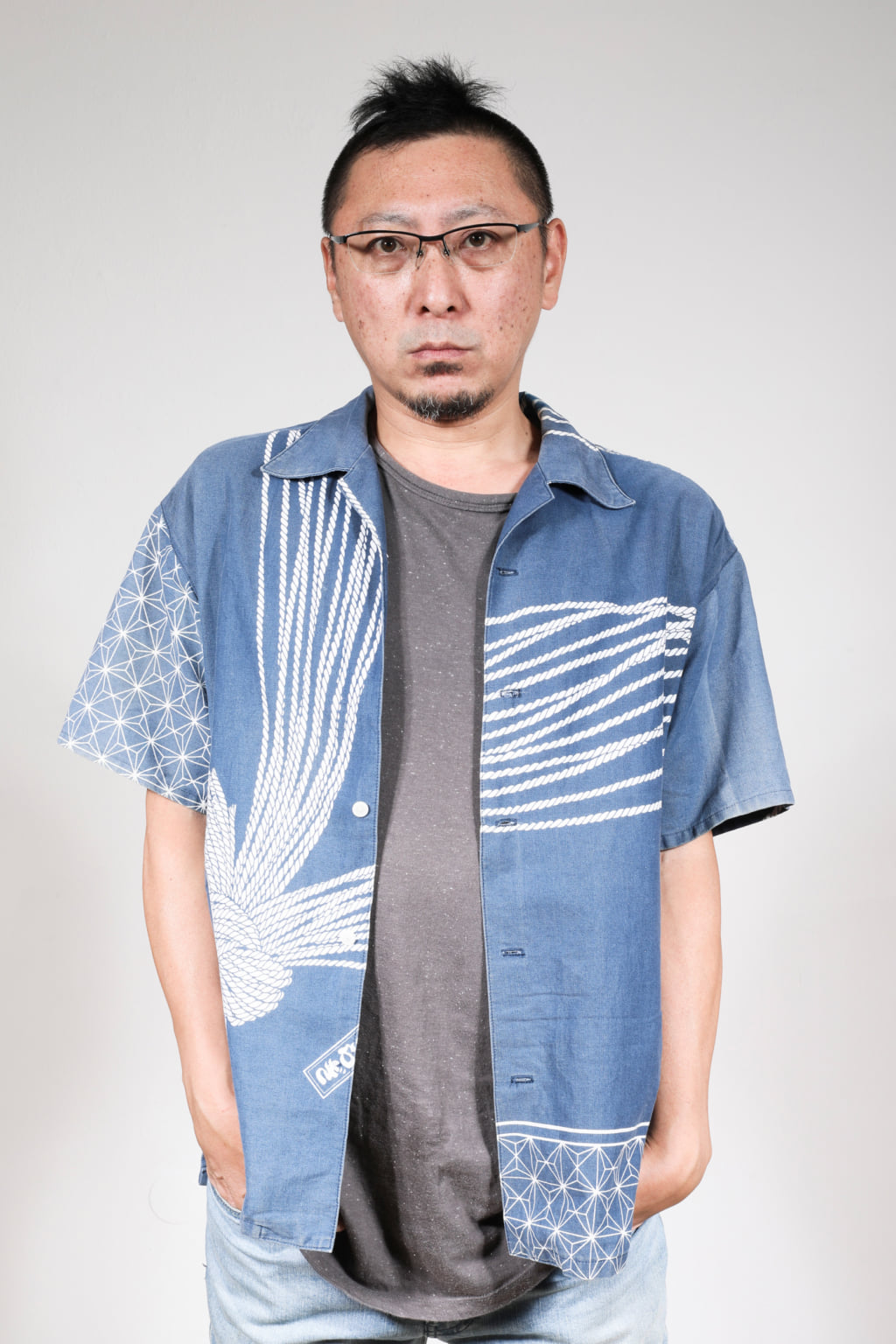
Portrait by Thomas Kalak
TRENDING
-
A House from the Taisho Era Reveals Its Secrets
While visiting an abandoned building, Hamish Campbell discovered photographs the owner had taken of the place in the 1920s.

-
The Taboo-Breaking Erotica of Toshio Saeki
The master of the 1970s Japanese avant-garde reimagined his most iconic artworks for a limited box set with silkscreen artist Fumie Taniyama.

-
With Meisa Fujishiro, Tokyo's Nudes Stand Tall
In the series 'Sketches of Tokyo', the photographer revisits the genre by bringing it face to face with the capital's architecture.

-
Masahisa Fukase's Family Portraits
In his series ‘Family’, the photographer compiles surprising photos in which he questions death, the inescapable.

-
Hajime Sorayama's Futuristic Eroticism
The illustrator is the pioneer for a form of hyperrealism that combines sensuality and technology and depicts sexualised robots.





